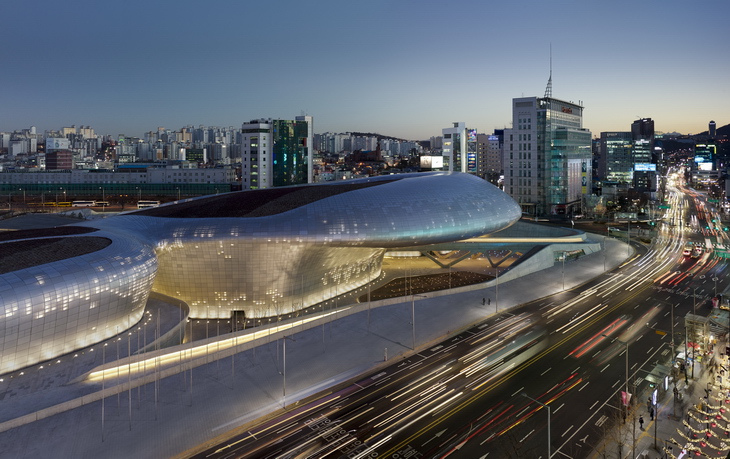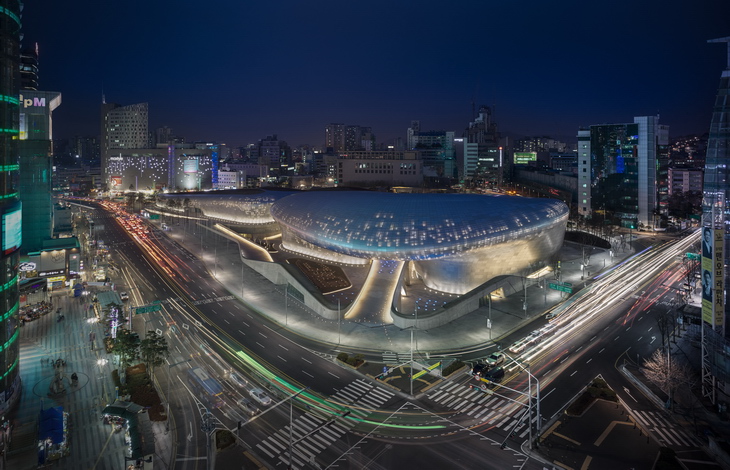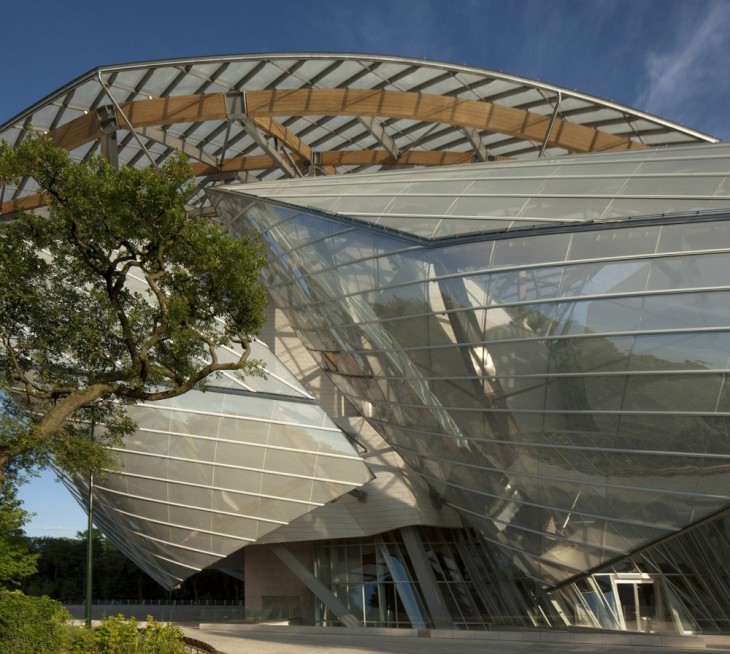
In contemporary architecture, stainless steel has emerged as a revolutionary material, enabling architects and designers to push the boundaries of creativity and engineering. The advent of parametric architecture, spearheaded by visionaries like Zaha Hadid Architects, Gehry Partners, Bjarke Ingels Group, has particularly benefited from the versatility and strength of stainless steel. And today Parametric architecture stands shoulder to shoulder with previous historic architectural ears. ARCHISCENE magazine‘s editors investigate how stainless steel is influencing modern architectural designs and the specific contributions of parametric architecture to this evolving landscape.
The Role of Stainless Steel in Modern Architecture
Stainless steel, known for its robustness, flexibility, and corrosion resistance, has become a cornerstone in modern architectural design. Unlike traditional building materials, it allows for the creation of more intricate, durable, and dynamic structures. Its reflective quality also adds a visual allure that is becoming synonymous with contemporary aesthetics. The projects are a multilayer of collaboration between various companies creating every component of the project, for example such as the stainless steel angles by Montanstahl, pivotal within any contemporary project.
Advantages of Stainless Steel:
Durability and Strength: Provides longevity to buildings under various environmental conditions.
Aesthetic Flexibility: Offers a sleek, modern look and can be finished in a variety of textures and appearances.
Sustainability: 100% recyclable, which enhances the environmental credentials of architectural projects.
Parametric Architecture: A New Design Paradigm
Parametric architecture uses algorithmic thinking to enable the expression of parameters and rules that, together, define, encode, and clarify the relationship between design intent and design response. This form of architecture goes hand in hand with stainless steel due to the material’s ability to be molded into complex, curved structures which are often integral to these designs.
Key Features of Parametric Architecture:
Adaptability: Can easily incorporate changes and evolve over time based on environmental and human data.
Innovation: Allows for the creation of structures that were once considered impossible to build.
Efficiency: Improves the speed and accuracy of construction through computer-aided design and manufacturing techniques.
Case Studies: Zaha Hadid Architects and Beyond – Zaha Hadid Architects (ZHA) has been at the forefront of integrating stainless steel with parametric design principles to create architectural marvels.Other companies working in the field are Henning Larsen, Perkins+Will, Bjarke Ingels – BIG, HOK, Populous, Gehry Partners founded by Frank Gehry and Gensler, to newly established Wutopia Lab and MVRDV to name a few.
Founded in 1962 by Frank Gehry, Gehry Partners has become synonymous with iconic and innovative architecture and is often considered a predecessor of Parametric Architecture. Their designs are distinguished by their unique shapes, materials, and construction methods, resulting in truly unique buildings. Known for their sculptural forms and the creative use of unconventional materials, their works are instantly recognizable worldwide. Gehry’s work relies throughout on the implementation of stainless steel, seen on both interior and exterior facade designs of their buildings.
Here are some examples:

Example Projects:
Dongdaemun Design Plaza, Seoul, South Korea: Features a futuristic metallic skin made of stainless steel, which encases a series of spaces that flow into each other, demonstrating the material’s flexibility and aesthetic appeal.
Galaxy SOHO, Beijing, China: This project utilizes continuous, fluid forms that mimic the natural landscape, achieved through the extensive use of stainless steel in its construction.
Foundation Louis Vuitton in Paris by Frank Gehry and Gehry Partners – the museum buildings is the latest and best examples of use of stainless steel in contemporary architecture. The building use a perfect example of mixed wooden and metal constructions allowing the round and peculiar balloon like shapes of the now Parisian landmark located in the Bois de Boulogne parc.
The Impact of Stainless Steel on Architectural Innovation
The collaboration between stainless steel and parametric design methodologies like those employed by architecture practices such as Gehry Partners, Gensler, BIG and ZHA illustrates a symbiotic relationship where material science and architectural vision converge.

This partnership has led to:
New Aesthetic Standards: Stainless steel’s properties facilitate the creation of polished, sculptural forms that are becoming icons of modern cities.
Enhanced Functional Capabilities: Buildings are not only visually striking but also highly functional and responsive to their environments.
Economic Viability: The durability and low maintenance of stainless steel reduce the overall lifecycle costs of buildings.
Finally, the integration of stainless steel in contemporary architecture, particularly through the lens of parametric design, represents a significant shift in how structures are conceived and built. It is not just about aesthetic enhancement but also about pioneering new possibilities in the spatial and functional aspects of architecture. As technology and material science continue to evolve, the scope of what can be achieved with stainless steel and parametric design is bound only by the limits of imagination. This dynamic combination will undoubtedly shape the future skyline of cities around the world, making them more sustainable, efficient, and extraordinary.




Nothing without st33le 🙏⚡️